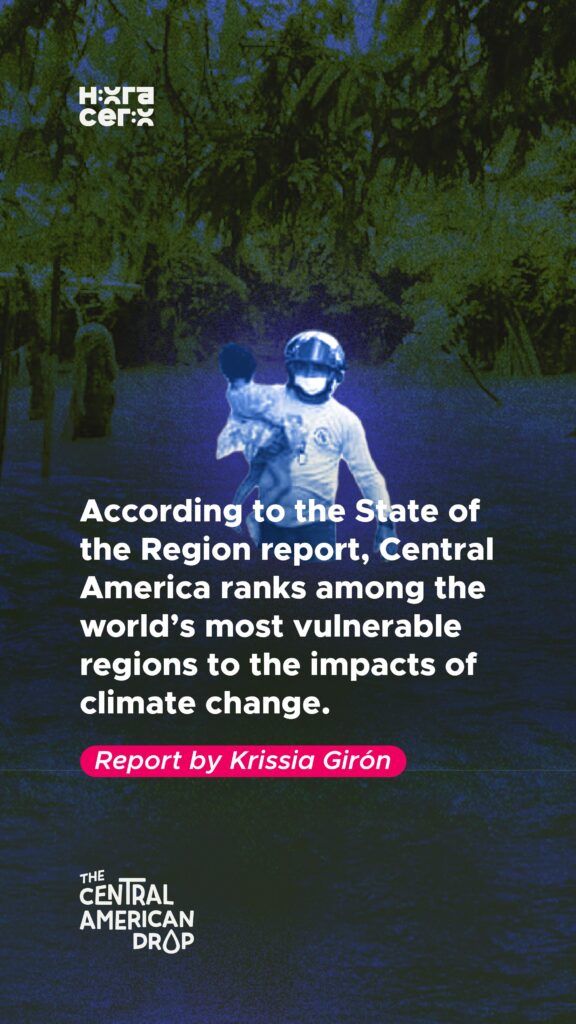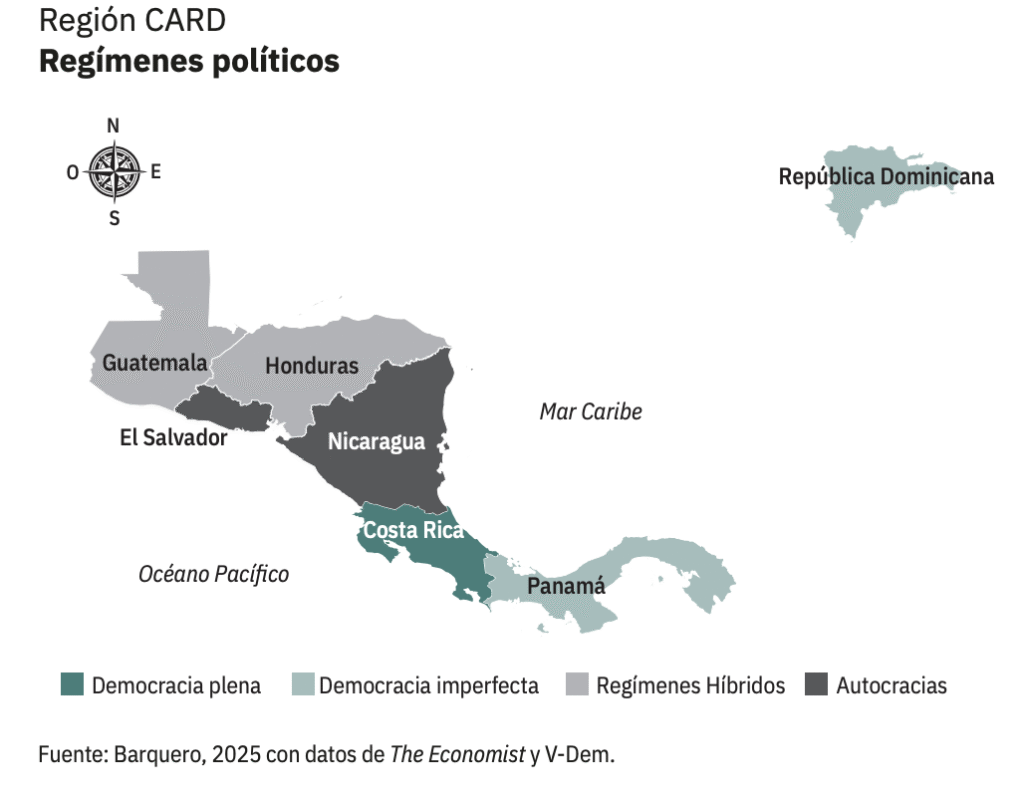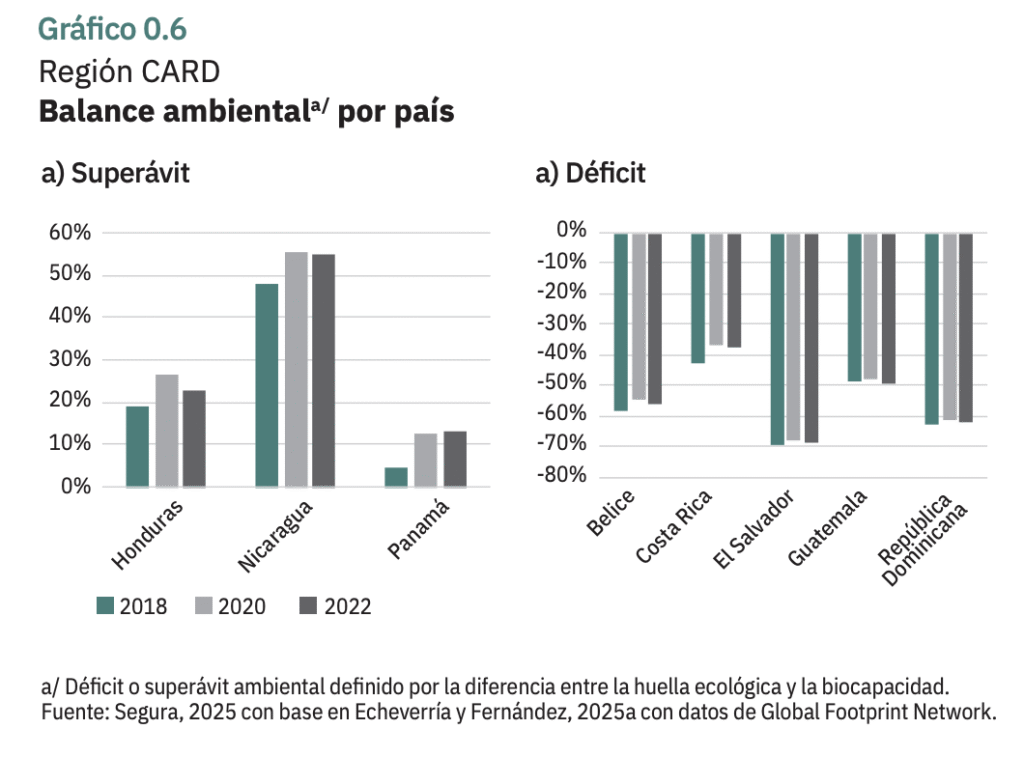
Prolonged droughts, intense hurricanes, rising sea levels and temperatures, and an accelerated loss of biodiversity, deforestation, and low water capacity are just some of the impacts of climate change in Central America, a region highly vulnerable to this phenomenon, not only due to the environmental crisis but also because of its slow social and economic development and political deterioration.
The State of the Region Report, prepared by Costa Rica’s State of the Nation Program, indicates that Central America is experiencing its most complex and dangerous period in terms of social, economic, environmental, and political development since the armed conflicts of the 1980s. This is a critical crossroads that places the poorest communities at the center of environmental impacts and democratic setbacks.

This report reveals a complex panorama where institutional crises and climate change are intertwined in the midst of the development of each country which, as described in the report, has two limitations: on the one hand, it is environmentally unsustainable, and on the other hand, it is socially exclusive.
The report documents that the countries of CA and the Dominican Republic consumed more and more natural resources and increased their polluting emissions. Overall, an increase in the ecological footprint and a deterioration of the region’s natural heritage, the material basis for sustainable human development, were observed.
On the other hand, it notes that inequality exists in the distribution of benefits and opportunities stemming from the countries’ economic performance, characterized by high levels of income concentration and low tax burdens, along with historical gaps in education, «which prevented large segments of the population from accessing good-quality, well-paying jobs. Although the incidence of poverty has decreased, more than half of households in Honduras, Guatemala, and Nicaragua continue to live in that condition,» the report states.
Alberto Mora, research coordinator for this report, explains that this inequality, coupled with the political and institutional deterioration reported in each of the countries, has resulted in a significant proportion of people lacking access to the labor market.
“Women and young people in particular lack access to the labor market, and the labor market is the main transmission channel between economic growth and household well-being. This also coincided with a reduction in public social investment, that is, the amount of resources countries dedicate to investing in health, education, housing, and social protection.”.

Mora describes this situation as an unfortunate coincidence with the deteriorating political and institutional structure, an economic system that fails to transform growth into opportunities for people, and unsustainable environmental patterns of production and consumption.
«For example, the burning of fossil fuels by a transportation sector that is obsolete, inefficient, and fails to meet the mobility needs of people and goods, but which also coincides with a worsening of the effects of climate change on the region. A region that has historically been vulnerable to the impacts of extreme natural phenomena and is now internationally recognized as one of the most vulnerable territories in the world to the effects of climate change.»

Various studies in the region, such as the one on Damages and Losses in Central America, carried out by The Climate Route, confirm this deterioration. He states that the countries of the dry corridor experience recurring lack of rain.
“The water deficit can be traced to an abnormal distribution of rainfall, the El Niño Southern Oscillation (ENSO) phenomenon, and other factors such as deforestation. As these communities produce primarily for family consumption, the increased water deficit due to climate change increases the risk of malnutrition. Eighty percent of small-scale producers of basic grains in the CSC live below the poverty line,” the study states.
Alberto Mora affirms that the environmental crisis could continue to deepen the levels of social and economic inequality among the region’s population in the future, especially in light of climate change scenarios for the region. «Aridity indices indicate that the municipalities with the greatest aridity in the Dominican Republic will increase from 15% to 63% between 2020 and 2030, at their peak, during the period 2079-2099. This puts not only biodiversity at risk, but also water availability, electricity production, and other economic and social activities. A situation that is exacerbated by increased deforestation, urbanization, and other environmentally unsustainable patterns.»

The report’s call, Mora affirms, is for society to revalue democracy and its instruments and mechanisms so that, without sacrificing fundamental rights and freedoms, it can reconcile the population’s agenda, needs, and expectations with public policies and the priorities of the state and the political system. «Above all, to conceive of democracy as more than just a vote, but rather as having the pursuit of the common good at its core.»

| Cookie | Duración | Descripción |
|---|---|---|
| cookielawinfo-checkbox-analytics | 11 months | This cookie is set by GDPR Cookie Consent plugin. The cookie is used to store the user consent for the cookies in the category "Analytics". |
| cookielawinfo-checkbox-functional | 11 months | The cookie is set by GDPR cookie consent to record the user consent for the cookies in the category "Functional". |
| cookielawinfo-checkbox-necessary | 11 months | This cookie is set by GDPR Cookie Consent plugin. The cookies is used to store the user consent for the cookies in the category "Necessary". |
| cookielawinfo-checkbox-others | 11 months | This cookie is set by GDPR Cookie Consent plugin. The cookie is used to store the user consent for the cookies in the category "Other. |
| cookielawinfo-checkbox-performance | 11 months | This cookie is set by GDPR Cookie Consent plugin. The cookie is used to store the user consent for the cookies in the category "Performance". |
| viewed_cookie_policy | 11 months | The cookie is set by the GDPR Cookie Consent plugin and is used to store whether or not user has consented to the use of cookies. It does not store any personal data. |